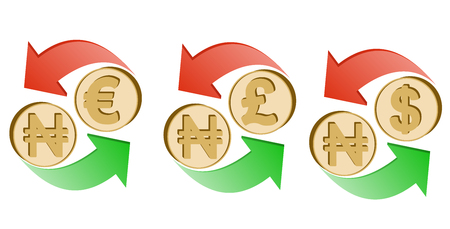Introduction to Currency Fluctuations in the UK
Currency fluctuations refer to the changes in the value of a nation’s currency relative to others, which can occur daily due to a host of economic, political, and market-driven factors. In the United Kingdom, the Pound Sterling holds a distinctive place as both a symbol of national identity and an influential player on the global stage. The Pound is one of the world’s oldest currencies still in use and often demonstrates considerable resilience, but it remains sensitive to domestic events such as Bank of England policy decisions, general elections, and broader geopolitical developments. Unlike countries that are part of the Eurozone, the UK maintains monetary independence, giving Sterling a unique role in shaping local economic conditions. These fluctuations not only affect international trade and investment but also have direct implications for individual savers and investors—particularly those who seek refuge or opportunity in assets like gold. Understanding how currency movements impact the real value of returns is especially crucial for UK-based investors navigating global markets with the Pound as their primary reference point.
2. Understanding the Relationship Between Gold and Sterling
Gold occupies a unique position in global finance as both a commodity and a store of value, with its price typically quoted in US dollars per troy ounce. However, for UK investors, the relationship between gold and the Pound Sterling introduces an additional layer of complexity to gold’s investment profile. The value of gold in the UK is not determined solely by international gold prices, but also by the prevailing GBP/USD exchange rate. This means that fluctuations in the pound can have a significant impact on the returns realised by British investors, regardless of movements in the underlying dollar gold price.
How Gold is Priced Globally
The international benchmark for gold pricing is set in US dollars, largely due to the dominance of the US financial system and the liquidity of major exchanges such as COMEX and the London Bullion Market Association (LBMA). The spot price reflects immediate delivery, while futures contracts allow traders to lock in prices for future settlement. These dollar-denominated benchmarks ensure that, wherever gold is bought or sold, it has a common reference point across borders.
Comparing Value: Gold Versus Pound Sterling
For UK investors, understanding how gold’s value translates into sterling terms is essential. When the pound strengthens against the dollar, the sterling value of gold falls if the dollar price remains unchanged. Conversely, when the pound weakens, gold becomes more expensive in sterling even if its dollar price stays flat. The following table illustrates this relationship:
| Gold Price (USD/oz) | GBP/USD Exchange Rate | Gold Price (GBP/oz) |
|---|---|---|
| $2,000 | 1.25 | £1,600 |
| $2,000 | 1.10 | £1,818 |
| $2,200 | 1.20 | £1,833 |
The Dual Impact on Returns
This dynamic means that UK investors must consider two factors: global movements in the price of gold and shifts in currency markets. In times of sterling weakness—such as during Brexit uncertainty or economic downturns—gold often provides an added hedge against local currency depreciation. Conversely, periods of sterling strength may erode potential gains from rising global gold prices. Therefore, currency risk management forms an integral part of any long-term approach to investing in gold within the UK context.
![]()
3. Drivers of Pound Sterling Volatility
Understanding the factors that drive fluctuations in the pound sterling is vital for anyone assessing gold returns within the UK. The volatility of the currency often stems from a complex interplay of political, economic, and market forces, all of which have far-reaching implications for investors.
Political Developments: The Lingering Impact of Brexit
The aftermath of Brexit continues to shape the trajectory of sterling. While the formal departure from the European Union is now several years past, ongoing negotiations over trade terms and regulatory alignment still inject uncertainty into markets. This lack of clarity can trigger sharp moves in the value of the pound, impacting both import costs and investment returns on assets like gold, which are denominated globally in US dollars.
Economic Policy and Bank of England Decisions
The monetary policy stance adopted by the Bank of England remains another crucial driver. Interest rate adjustments, quantitative easing programmes, and inflation targeting all influence confidence in sterling. For example, decisions to raise interest rates may bolster the currency in the short term but could also dampen economic growth prospects, complicating predictions for both sterling and gold prices. Investors must pay close attention to signals from policymakers, as these can swiftly alter market sentiment.
Geopolitical Events and Market Sentiment
Global geopolitical developments—such as conflicts, trade disputes, or unexpected shifts in international alliances—often reverberate through currency markets. The pound is not immune to such shocks; periods of heightened risk aversion typically see investors flocking to so-called ‘safe haven’ assets like gold and the US dollar, sometimes at the expense of sterling. As a result, gold returns measured in pounds can be amplified during times of global tension due to both rising gold prices and a weakening local currency.
Long-Term Perspective: Structural Shifts
Beyond immediate events, structural changes such as demographic trends, shifts in the UK’s trading relationships, and long-term productivity dynamics also play a part in influencing sterling’s value. These slower-moving forces may not generate headlines but are essential for those taking a long-term view on currency exposure and gold investments within a UK context.
Navigating Uncertainty: A Continuous Challenge
For UK-based investors considering gold as part of their portfolio, keeping abreast of these drivers is more than an academic exercise—it is a practical necessity. Fluctuations in sterling can either erode or enhance gold returns, making it imperative to adopt a steady approach informed by both current developments and underlying trends shaping Britain’s economic landscape.
4. The Impact of Pound Movements on Gold Prices for UK Investors
For investors based in the UK, understanding the relationship between the pound sterling and gold returns is crucial. Currency fluctuations can either amplify or diminish gold’s performance when measured in sterling terms. When analysing this dynamic, it is important to consider how both sterling strength and weakness typically affect the value of gold for UK-based portfolios.
Sterling Strength: Dampening Gold Gains
When the pound strengthens against other major currencies, particularly the US dollar, the price of gold in pounds tends to fall, even if global gold prices remain steady or rise modestly. This is because gold is primarily priced in US dollars worldwide; thus, a stronger pound makes dollar-denominated assets, including gold, relatively cheaper for UK buyers. As a result, any gains from rising global gold prices may be partially or wholly offset by the appreciation of sterling.
Example Scenario: Sterling Appreciation
| Global Gold Price Movement | Sterling Exchange Rate Movement | Impact on UK Gold Returns | |
|---|---|---|---|
| Scenario A | Gold price up 5% | Pound strengthens 5% vs USD | No gain (returns neutralised) |
| Scenario B | Gold price unchanged | Pound strengthens 3% vs USD | Loss for UK investor (-3%) |
Sterling Weakness: Enhancing Gold Returns
Conversely, when the pound weakens against the dollar, UK investors generally see an uplift in their local currency gold returns. Even if the international price of gold remains flat, a depreciating pound means more pounds are required to buy each ounce of gold, thereby increasing its value in sterling terms. Periods of pronounced political or economic uncertainty in the UK often coincide with such currency weakness, making gold an attractive hedge during these times.
Example Scenario: Sterling Depreciation
| Global Gold Price Movement | Sterling Exchange Rate Movement | Impact on UK Gold Returns | |
|---|---|---|---|
| Scenario C | Gold price unchanged | Pound weakens 10% vs USD | 10% gain for UK investor |
| Scenario D | Gold price up 7% | Pound weakens 5% vs USD | Total gain ~12% |
A Nuanced Relationship for Long-Term Investors
The interplay between sterling and gold underscores why UK investors must look beyond headline movements in global gold prices. Over the long term, periods of currency volatility can have a pronounced impact on realised returns. A stable approach involves monitoring both macroeconomic indicators affecting sterling and global factors influencing gold markets. By maintaining a long-term perspective and considering these dual influences, investors can better position themselves to weather currency-driven swings and capture the true diversification benefits that gold offers within a UK context.
5. Hedging Strategies and Practical Considerations
When navigating the complexities of currency fluctuations and their impact on gold returns in the UK, investors must adopt robust risk-mitigation strategies. The dynamic relationship between the pound sterling and gold prices means that unhedged exposure can sometimes amplify volatility and erode real returns. It is therefore prudent for UK investors to consider a combination of hedging techniques, diversified portfolios, and long-term planning to buffer against these currency risks.
Currency-Hedged Gold Funds
One increasingly popular approach among UK investors is the use of currency-hedged gold funds. These investment vehicles actively manage the currency risk associated with holding gold assets denominated in US dollars. By neutralising the effect of sterling movements relative to the dollar, such funds allow investors to focus on the underlying performance of gold itself, rather than being at the mercy of exchange rate swings. This approach can be particularly attractive during periods of heightened currency volatility or when there is uncertainty around the pound’s trajectory post-Brexit or amid shifting monetary policy.
Portfolio Diversification
Another essential pillar of effective risk management is portfolio diversification. Rather than relying solely on gold or other commodities, spreading investments across various asset classes—such as equities, bonds, property, and alternative investments—can help cushion overall portfolio returns from sharp movements in any one sector or currency. For UK-based investors, this might mean balancing domestic assets with international exposure while being mindful of how different holdings respond to changes in sterling’s value.
Long-Term Planning and Discipline
Finally, successful navigation of currency-related risks requires a steadfast commitment to long-term investment planning. Trying to time short-term currency swings can be a risky endeavour even for seasoned professionals. Instead, adopting a disciplined, long-horizon view allows investors to ride out temporary bouts of volatility and benefit from gold’s historical role as a store of value during periods of economic uncertainty. Regular portfolio reviews and adjustments remain vital to ensure that allocations continue to reflect both market conditions and personal financial goals.
6. Long-term Trends and Looking Ahead
When considering the impact of currency fluctuations—particularly those of the pound sterling—on gold returns in the UK, it is essential to adopt a long-term perspective. Historically, the pound has experienced periods of significant volatility, from the post-war years through to more recent events like Brexit and global economic shocks. These cycles have repeatedly shown that currency depreciation often coincides with stronger gold performance in sterling terms, as investors seek safe havens during times of uncertainty.
Looking back over several decades, we see that major devaluations or persistent weakness in the pound have tended to enhance golds appeal for UK investors. For example, during the financial crisis of 2008 and the aftermath of the Brexit referendum in 2016, sharp declines in sterling coincided with notable upswings in local gold prices. These historical episodes underline the role of gold as an effective hedge against currency risk—a lesson that remains highly relevant today.
However, it is also important to recognise that currency trends are rarely linear or predictable. The pound has at times recovered lost ground, leading to periods when gold returns have been less impressive for sterling-based investors compared to those holding US dollars or euros. This ebb and flow underlines the value of taking a measured, long-term approach rather than attempting to time short-term movements.
Looking ahead, several factors could shape the future trajectory of sterling and its influence on UK gold investment returns. These include ongoing political developments, shifts in international trade relationships, interest rate policies from both the Bank of England and other major central banks, and broader global economic conditions. With the UKs unique position on the world stage, fluctuations in sterling are likely to remain a key variable for investors weighing up their exposure to gold.
For those building a long-term portfolio, understanding these historic patterns—and maintaining awareness of current macroeconomic signals—can help inform more resilient strategies. While no one can predict precisely how future currency cycles will unfold, history suggests that sustained periods of sterling weakness tend to favour gold holders in Britain. As such, keeping an eye on both global trends and domestic developments remains crucial for anyone interested in maximising returns from gold investments in a UK context.


